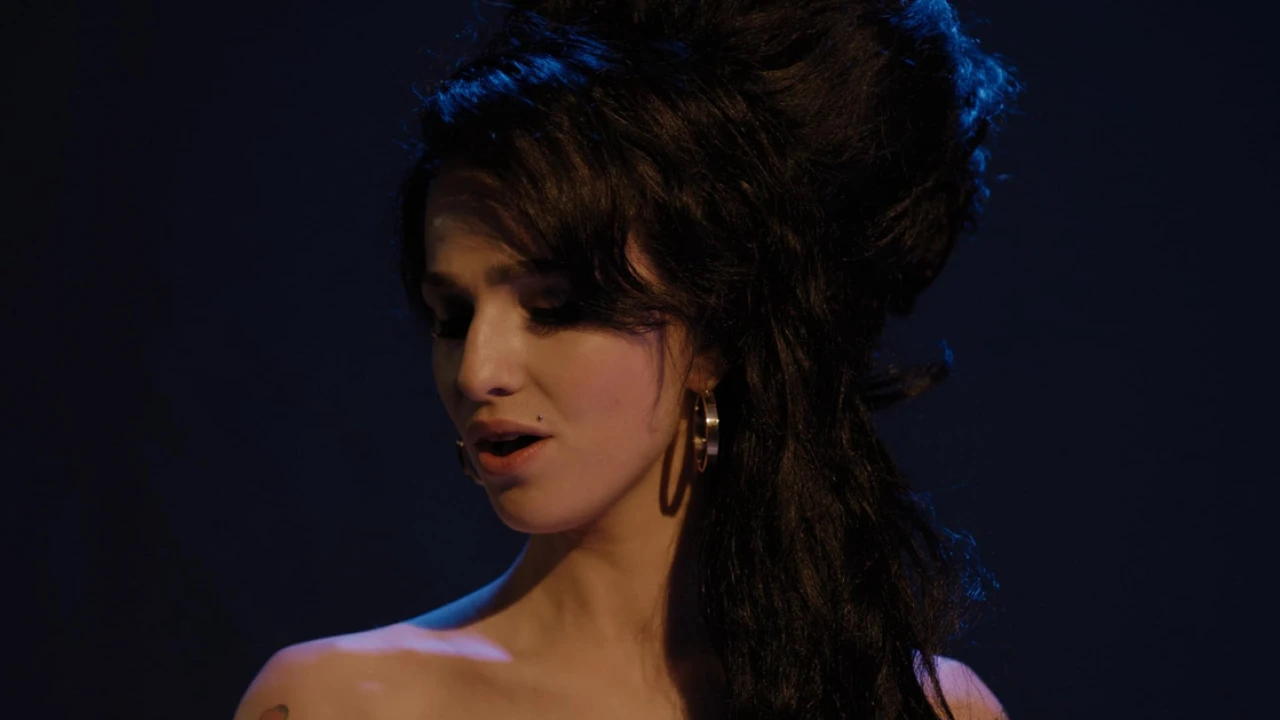World
Riots among students in Kyrgyzstan, Pakistanis also killed
Pakistani female students are also being harassed, on which Pakistani students have become concerned

Bishkek: There has been a commotion among the local and foreign students of Bishkek—the capital of Kyrgyzstan—in which Pakistani students have also been hit.
According to unconfirmed reports, three Pakistani students have been killed in the attacks of protesters, however, these deaths cannot be confirmed as yet.
The angry Kyrgyz students attacked and vandalized the hostels of Pakistani youths. Pakistani female students are also being harassed, on which Pakistani students have become concerned.
Some students told media that boys and girls have been tortured in the hostel, the students have also complained of non-cooperation from the Pakistan Embassy.
A Pakistani medical student in Bishkek, told a private new channel that the dispute started due to the harassment of the Egyptian students by the Kyrgyz students.
According to him, riots broke out after Egyptian students reacted against Kyrgyz students and they started attacking foreign students all over Bishkek.
Videos of rioters torturing students in Bishkek are going viral on social media, but there is no confirmation about them.
The statement of the head of the internal affairs department of Bishkek city has come out on the issue of violence against foreign students in Bishkek.
The head of Bishkek city interior affairs said that the report of death in the fight on May 13 is false.
According to Kyrgyz media, the head of internal affairs stated that on May 13, there was a fight between local and foreign students in the hostel of Bodiuni in Bishkek. Later, three foreigners involved in the fight were detained.
He added that the local students protested against the incident of May 13 on the evening of May 17 in Choi Kermanjan Dutka area and demanded action against the foreigners involved in the dispute.
According to Kyrgyz media, the head of the Internal Affairs Directorate asked the protesters to end the protest, while the detained foreigners later apologized, but the protesters refused to disperse and more people began to gather.
According to local media reports, several people were detained for violating public order in view of the danger of the demonstration becoming violent. Later, the protesters dispersed after negotiations with the head of the federal police.
Regional
Back to Black is the worst of bad musical biopics
Thanks to this new movie about Amy Winehouse, the bar for movies about musicians remains in hell.

Since the first stills of actress Marisa Abela sporting winged eyeliner and a matted beehive emerged online, the new Amy Winehouse biopic Back to Black has been met with mockery, if not total dread, from fans of the late British singer.
It wasn’t just that Abela bears little resemblance to Winehouse, dressed in what looks like a last-minute Halloween costume. Given the amount of shoddy musical biopics that are being released ad nauseam, it seemed like an inadequate medium to explore the musician, who died of alcohol poisoning at 27 in 2011. Since its initial release in the UK, several critics have already affirmed these hesitations.
Making a biopic is always a delicate art form. By nature, these films are primed to be over-dissected and picked apart for historical inaccuracies, flawed impressions, and limited perspectives. In the case of Back to Black, though, the depiction of Winehouse rings both false and strikingly convenient for the people who were involved in her life.
As Jason P. Frank and Rebecca Alter write in Vulture, the film spends too much time “trying to reclaim her as wholesome,” against the tabloids’ vilifying coverage. More significantly though, it fails to address the ways the UK’s sexist media and the people around her contributed to her demise. As a result, director Sam Taylor-Johnson and screenwriter Matt Greenhalgh end up placing most of the responsibility for Winehouse’s downfall on her fragile shoulders.
Needless to say, any attempt to dramatize Amy Winehouse’s life was going to generate polarizing opinions. But Back to Black, along with a recent slew of biopics, makes one curious as to what extent viewers must suspend their expectations and fan knowledge to enjoy a film based on true events.
Biopics can never fully encapsulate a person’s life. But Back to Black is an attempt to erase history.
:no_upscale()/cdn.vox-cdn.com/uploads/chorus_asset/file/25447854/Screen_Shot_2024_05_14_at_2.26.07_PM.png)
Winehouse’s career — hampered by addiction and bulimia — is hardly the stuff of a crowd-pleasing popcorn movie. Her story never stood a chance within the confines of the genre. Biopics, particularly from major studios, have to shrink a person’s life into a palatable enough story that will attract the largest audience and generate the most money possible. Even with its R rating and a melodramatic flair, Back to Black is shockingly sanitized, neglecting to capture just how ugly and violent her experience actually was.
In Back to Black, Winehouse is strangely isolated from the media blitz that surrounded her life. Beginning with her early songwriting days as a teen, the script remains focused on the intimate familial and romantic dynamics that would make the biggest impact on her as an artist — specifically, her relationships with her grandmother Cynthia (Lesley Manville), her father Mitch (Eddie Marsan), and, most of all, her ex-husband Blake Fielder-Civil, who would serve as the muse for her hit album, Back to Black.
Somehow, her most notable musical collaborators, Mark Ronson and Salaam Remi, are merely footnotes in this story. The movie isn’t really interested in Winehouse’s creative process or inspiration either, aside from name-dropping some of her favorite soul artists.
Even at the height of her visibility, Winehouse spends almost all of the movie in London, specifically Camden Town, visiting loved ones, performing for small crowds in pubs, and stumbling drunkenly through the street. Aside from a notably disastrous performance at the Glastonbury Festival, you wouldn’t know that Winehouse performed shows and made public appearances outside of the UK and had many friends, including other British celebrities and musicians.
Needless to say, zooming out and portraying Winehouse as a public person would require addressing the intrusive, predatory treatment she faced from the media. At the height of her insobriety — which spawned multiple drunken live performances, arrests, and paparazzi photos of her looking bloodied and disheveled or openly doing drugs — she became not just a punchline, but practically a meal ticket for journalists and paparazzi. Tabloids mocked her body without any consideration of what appeared to be an eating disorder. Meanwhile, other outlets and comedians counted down her remaining days alive. Even after her death, she continued to be a punchline. Controversially, actor Neil Patrick Harris hosted a Halloween party a few months after her death with a meat platter labeled with her name and resembling a rotting corpse.
In Back to Black, though, moments of Winehouse being chased by paparazzi or publicly mocked are fleeting, or else noticeably absent from the storyline. Audio of comedian George Lopez announcing her Grammy nominations in 2008 is played in the film but cuts out before he makes a joke about her addiction struggles to the audience’s chuckles. Additionally, her rare encounters with the paparazzi in the film don’t totally represent what an invasive presence they were in her life, particularly as she began to publicly spiral.
In fact, the most devastating interaction she has with the press is at the end of the film when a paparazzo provokes the recently sober singer by asking about Fielder-Civil’s newborn child with his new girlfriend. The movie is rather ham-fisted in conveying Winehouse’s unfulfilled desires to be a mother, as if it’s a compelling sign of virtue for the troubled singer. That said, she immediately becomes heartbroken at the mere mention of her ex’s offspring — so much so that the film frames the moment as the cause of her relapse, prompting her death.
The men in Winehouse’s life are strangely given a pass.
Another problem comes along in the film with the inaccurate portrayal of the men who had the biggest impact on Winehouse’s life — her father, Mitch, and her ex-husband, Fielder-Civil. After more than a decade of tasteless interviews and attempts to profit off Winehouse’s memory, it’s hard to view either of these men in a favorable light. Still, the movie positions them as collateral damage in Winehouse’s path of destruction. As Back to Black tells it, these men were simply trying to oblige her irrational needs, not purposely enable them.
Not only do these characterizations feel funky to anyone who’s familiar with their public antics — for example, Fielder-Civil has been accused of selling details of his and Winehouse’s love story to the tabloids — their soft depictions, in comparison to hers, feel like an extension of the same sexism she experienced in the press.
For instance, Winehouse’s relationship with Fielder-Civil in the film lacks some much-needed nuance regarding the troubling amount of power he held over her life. While Fielder-Civil has a large presence in the film, his contribution to her ruin — he admitted that he introduced her to heroin, crack cocaine, and self-harming — and the ways he seemed to prey on her weakness are glaringly understated. For the most part, he’s framed as an earnest and charming bad boy who dabbles in hard substances, which Winehouse just happened to fall into alongside him. Furthermore, as Little White Lies writer Rogan Graham notes, it’s questionable that Taylor-Johnson “goes out of her way to depict Amy’s first time trying hard drugs as an occasion when she’s alone.”
Back to Black doesn’t have much to say about the role of her father in Winehouse’s downfall either. Despite Mitch walking out on her family as a child, Amy shared a strong bond with her father, which she commemorated with a “Daddy’s Girl” tattoo on her left arm. In the film, he’s portrayed as the biggest advocate of her singing career, protective against the other men in her life and excessively doting. While he may have been these things at certain points in her life, the 2015 documentary Amy illustrates a more complicated portrait of their relationship.
In the Oscar-winning film, directed by Asif Kapadia, Winehouse’s friends recount her father rebuffing their pleas to send Winehouse to rehab. (This moment isn’t portrayed with much reflection in Back to Black, rather just an anecdote leading up to her hit single “Rehab.”) Amy also revisits the time Mitch bombarded his daughter with a camera crew while in St. Lucia, where she fled from the public eye after getting sober in 2008. The footage was for a 2010 Channel 4 documentary called My Daughter Amy, where he, in part, expressed his own frustrations and regrets in dealing with his daughter’s addiction. After the film aired, Winehouse tweeted that the documentary was “embarrassing.”
Considering that Winehouse’s family didn’t authorize or have any say in Back to Black, according to Taylor-Johnson — although, they have endorsed it — it’s even more shameful that the film spares him from any sort of skepticism regarding the way he maneuvered in his daughter’s life. Instead, perfunctory scenes of Mitch inquiring about her weight and rushing her to a rehab facility (after he initially said no) feel like concerted PR.
Will musical biopics ever make us happy?
With all of its missteps and murky intentions, Back to Black might just be the tipping point in a prevalent conversation about the function of musical biopics and what we should demand from them.
As early as 1946, when Cary Grant played legendary composer Cole Porter in Night and Day, musical biopics have been a huge profit generator for both the film and music industries. Following the Oscar-winning and box-office-breaking success of the 2018 Queen biopic Bohemian Rhapsody, Hollywood — and musical artists looking to hike up their streaming numbers — have co-signed a sudden stream of lackluster or, in the case of Back to Black, utterly egregious biopics. In the past five years alone, movies offering conservative portrayals of Bob Marley, Elton John, Judy Garland, Whitney Houston, and Aretha Franklin have left much to be desired. As with comic-book movies as of late, it’s hard to engage with these films as much more than cash grabs coming down Hollywood’s IP conveyor belt.
This barrage of big-studio biopics is emblematic of a formula that’s proven to be commercially successful and easy to replicate. The expected melodramatic flourishes and rousing moments that make up these movies have become so obvious that they’ve inspired a subgenre of biopic parodies, like This Is Spinal Tap, Walk Hard: The Dewey Cox Story, and Pop Star: Never Stop Never Stopping.
When the projects transcend their conventions, they’re often the experimental work of arthouse directors, like Todd Haynes, who telegraphed Karen Capenter’s anorexia with Barbie dolls in The Karen Carpenter Story: Superstar and portrayed Bob Dylan with multiple actors in I’m Not There. (There’s also his equally good fake rock biopic, Velvet Goldmine.) Other times, they’re elevated by dynamic performances, like Jessica Chastain and Michael Shannon playing Tammy Wynette and George Jones in Showtime miniseries George and Tammy. In general, though, there’s a seemingly impossible problem in having actors embody musical giants — like Winehouse — who we connect to because of their unique talent, personalities, and overall flair, which simply can’t be replicated.
In a post-Me Too Hollywood, there did feel like a more obvious lane for a Winehouse biopic to occupy that would’ve at least made it feel more truthful. Many recent biographical projects outside of the musical subgenre have served the specific purpose of redeeming women from harmful public narratives and providing empathy for their experiences in the limelight. One could argue that the Marilyn Monroe biopic Blonde was a (very poor) attempt to make audiences sympathize with an actress whose life was ridden with turmoil — although, the lurid fabrications in the film complicate this. The Pablo Larrain film Spencer, a similarly experimental take on Princess Diana, shed light on her eating disorder and feelings of imprisonment as a member of the royal family. Another arthouse film, Sofia Coppola’s Priscilla, offers a more meditative counterpiece to Baz Luhrmann’s technicolored extravaganza Elvis, which neglected to address the King of Rock ‘n’ Roll’s abusive treatment of his then-wife, Priscilla Presley.
At this point, maybe it would’ve been reductive if Back to Black was mostly about Winehouse’s victimization. Amy already does a decent job of laying that out. Plus, these cultural reappraisals have become formulaic in their own way. However, illuminating the patriarchal forces that helped derail her life would at least provide some context for her fragility, rather than positioning her as an inevitable trainwreck destined to happen.
One could easily imagine a more compelling film interested in exploring the way Winehouse’s bulimia and the insecurity she dealt with affected her life and relationships. Instead, Back to Black adds up to nothing more than Daily Mail headlines.
Regional
Why school segregation is getting worse
Here’s why public school segregation has been steadily rising for three decades.

Friday marks the 70th anniversary of the landmark Brown v. Board of Education decision, in which the Supreme Court ruled that the “separate but equal” schools for racial minorities were inherently unequal and unconstitutional.
But so many years after the watershed ruling, new research confirms a startling trend: School segregation has been getting steadily worse over the last three decades.
Researchers at Stanford University and the University of Southern California found that racial segregation in the country’s 100 biggest school districts, which serve the most students of color, has increased by 64 percent since 1988. Economic segregation, or the division between students who receive free or reduced lunch and those who do not, increased by 50 percent since 1991.
The study primarily focused on white-Black segregation, the groups that the Brown decision addressed, but found that white-Hispanic and white-Asian segregation both also more than doubled since the late 1980s in the large school districts.
Why is history reversing itself?
Residential segregation, which researchers have historically identified as the root cause, isn’t the chief driver, according to the new study. The increased segregation also isn’t due to shifting demographics nationwide, as the country becomes less white. In most of the large districts that the researchers examined, housing segregation and racial economic inequality declined.
Instead, they cited two policy choices America has made: increasing school choice options and ending court oversight of integration efforts.
“When we switched from a commitment to integration and equity to school choice, it’s not terribly surprising that we see rising school segregation,” said Ann Owens, a professor of sociology and public policy at USC and one of the report’s authors. “We’ve abdicated our responsibility to integration, and unfettered choice does not magically lead to integration.”
And now, the steady increase means that Black and Hispanic students are more likely to be concentrated in higher-poverty schools with fewer resources, a trend that worsens academic and life outcomes.
School choice, namely charter schools, has expanded
School choice, the programs and policies that let families use public funding to access alternatives to traditional public schools, has grown in the past few decades. That’s particularly true of the charter school sector, which creates publicly funded schools that have greater flexibility than traditional public schools due to “charter” agreements with states. Some of the first charter schools were introduced in the 1990s to create alternative learning environments, with their own curricula and discipline policies, for example.
Charters now serve 3.7 million students in 8,000 schools, according to the National Alliance for Public Charter Schools. During the 2021-22 school year, they enrolled 7.4 percent of all public school students.
That might not seem like that many students — but it’s less how many are enrolling, and more who is.
The study supports the idea that parents, particularly white parents, have enrolled their children in charter schools that are majority white. In the Los Angeles Unified School District, for example, white parents have opted out of big urban district schools. There’s generally more segregation both within the charter sector and between charter and traditional public schools.
“We do see that as the charter sector expands, the places where it expanded fastest from the late ’90s to today tend to be places where segregation grew the most even after we take into account lots of other things that were going on,” said Sean Reardon, the faculty director of Stanford’s Educational Opportunity Project that produced the report and a new “Segregation Explorer” tool.
It’s not just white families driving the change: Some charters explicitly market themselves to families of certain racial or ethnic communities or neighborhoods, which has helped increase segregation too.
As school choice programs were expanding, another policy that helped integrate schools was ending.
Court oversight has vanished
When Brown was decided in 1954, the Court didn’t immediately require school districts to desegregate.
It wasn’t until the Supreme Court’s 1968 decision in Green v. County School Board of New Kent County that schools were mandated to develop plans to dismantle their segregated enrollment systems. The decision introduced new criteria courts could use to evaluate schools’ compliance — such as the quality of a school’s physical resources and amenities (think: the type of extracurricular activities offered or the kind of transportation they provide all students, the number of teachers, etc.) or the ratio of Black and white students and teachers.
The orders had a huge impact, but by the early ’90s, districts were released from the mandates after a series of cases that gave districts local control.
The new research shows that within five to eight years of districts being released from mandates, segregation increased. Since 1991, about two-thirds of school districts that were required to meet court desegregation mandates were removed from court oversight.
Why this matters — and how to reverse school segregation
Brown was supposed to lead to long-lasting desegregation. Though school segregation in most school districts is much lower than it was 60 years ago, it’s higher than it was 30 years ago. And today’s divisions are enough to concentrate Black and Hispanic students in higher-poverty schools.
And that in turn “drives a lot of inequality and disparate outcomes that we see,” said Owens. “It’s not that sitting next to a kid of a particular racial group is on its face beneficial. It’s that resources from home, social resources, and political resources in our society are linked to race.”
Achievement gaps are larger and grow faster as kids progress through school in more segregated districts than more integrated districts, Reardon said, adding that integration efforts tailored to a specific town’s issues have led to very large improvements in educational and life outcomes for students of color. Research has also shown that desegregation doesn’t worsen outcomes for white students.
Given that housing segregation helped create school segregation in the first place, tackling this issue will mean taking a “a multi-sector approach because the education system alone can’t address it,” Reardon said.
Barring that, there are a few solutions to at least help us counteract the slides of the last three decades. Everything from voluntary integration programs to socioeconomic-based student assignment policies — and if we’re committed to school choice policies, choosing ones that affirmatively promote integration.
This story originally appeared in Today, Explained, Vox’s flagship daily newsletter. Sign up here for future editions.
-

 Pakistan 20 hours ago
Pakistan 20 hours agoSuo Motu case: CJP seeks response from Vawda, Mustafa
-

 Pakistan 1 day ago
Pakistan 1 day agoNAB amendments case: Imran appears in SC via video link
-

 Business 1 day ago
Business 1 day agoRs1,600 increase recorded in per tola gold price
-

 Pakistan 17 hours ago
Pakistan 17 hours agoSummer holidays announced in Punjab
-

 Business 1 day ago
Business 1 day agoPakistan's forex reserves surge $15mn
-

 World 2 days ago
World 2 days agoSlovakia PM Fico shot and wounded, TASR agency reports
-

 Pakistan 1 day ago
Pakistan 1 day agoPunjab going to modernise healthcare system: CM
-

 Pakistan 2 days ago
Pakistan 2 days agoPakistan performs successful training launch of Fatah-II Guided Rocket System





















